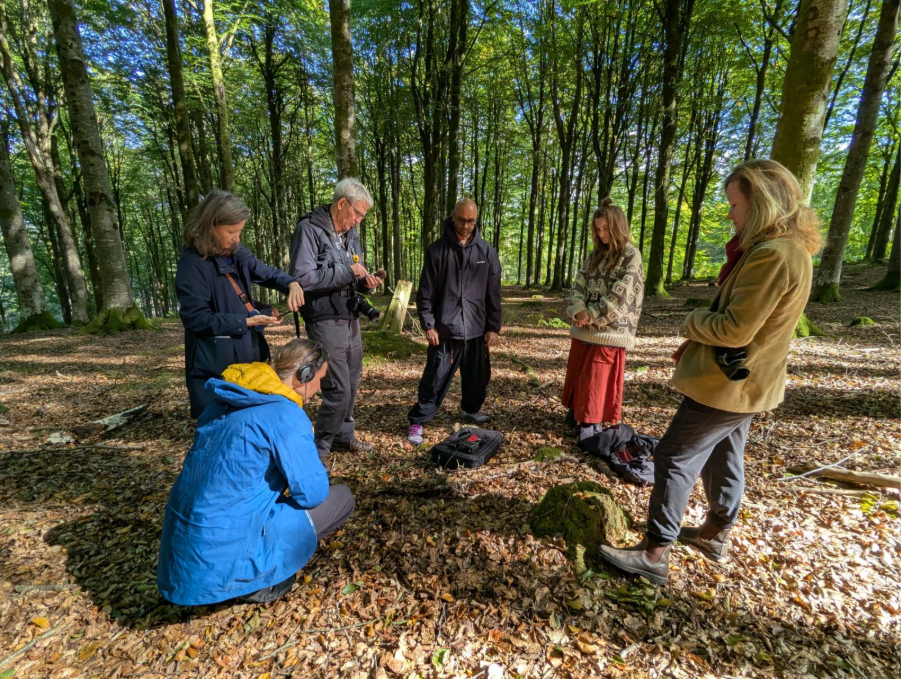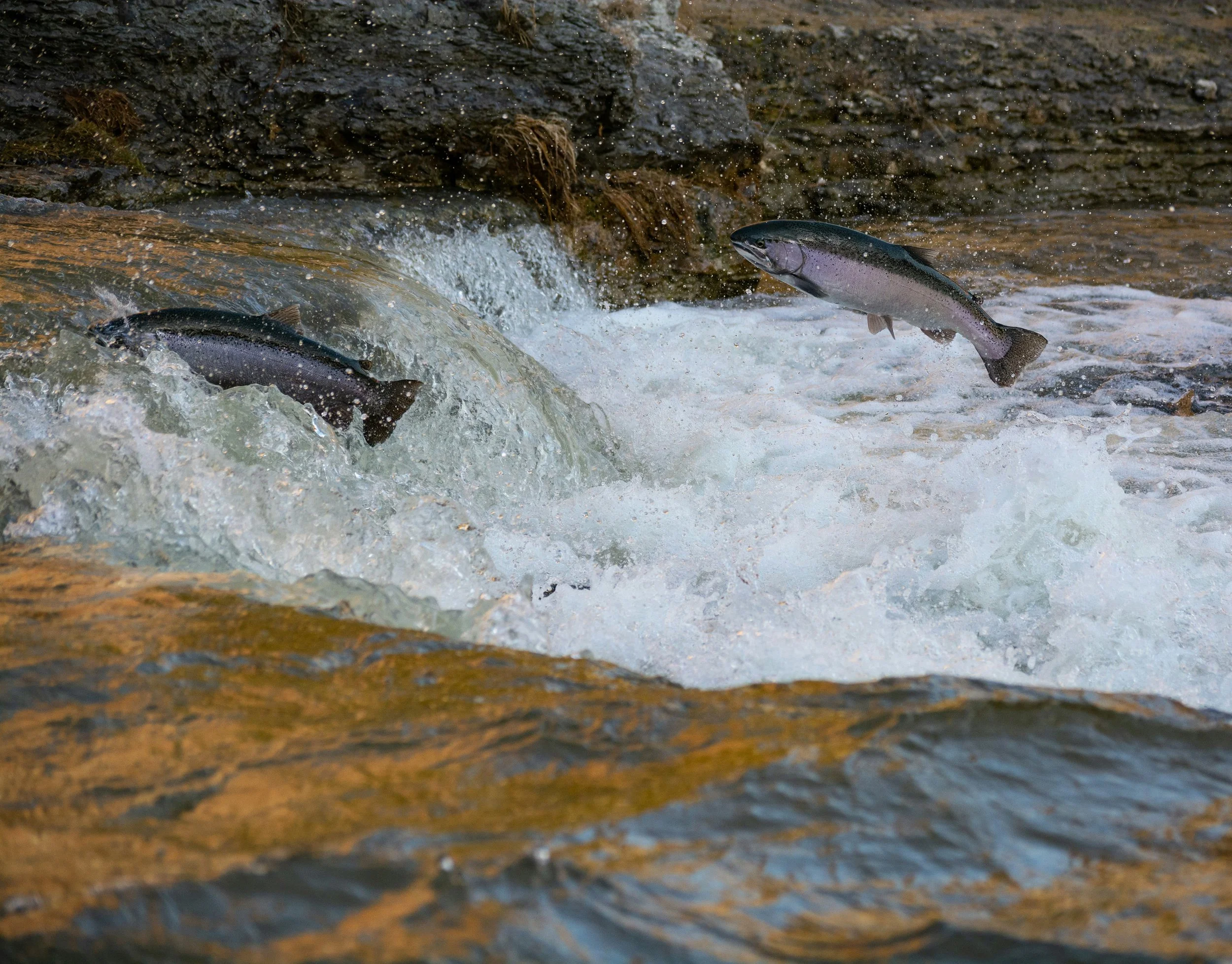Britain’s temperate rainforests: Where forest, River and sea become one.
Written by: Dr Gemma Anderson-Tempini
The connectivity between rivers, trees and oceans seen in Cornwall on the River Fal. Credit: Bull and Wolf
When I attended the Woodland Trust's temperate rainforest event at Exeter's Corn Exchange last week, I expected to learn about rare habitats. What I discovered was far more profound: these forests aren't isolated ecosystems at all. They're living nodes in a vast network that connects uplands to oceans, operating as a single breathing, flowing system.
What Makes Temperate Rainforests Special
The abundance of epiphytes - lichens, mosses, and tree lungwort carpeting every surface - immediately sets temperate rainforests apart. These aren't mere decorations. Each ancient tree becomes what ecologists call a "holobiont": not just one organism, but an entire community. The tree, its mycorrhizal fungi, its bacterial partners, its epiphytic passengers, and countless invertebrates all function as one cooperative unit.
During my recent walk through Fingle Woods in Devon, I watched this principle unfold at microscopic scales. But the speakers at the event, including Sam Manning from the Woodland Trust, Ennia Bosshard from the Thousand Year Trust, and author Guy Shrubsole, revealed how the same cooperative logic operates at landscape scale, connecting forests to rivers and seas in continuous material exchange.
Dr Gemma Anderson-Tempini and others gathering around a device to listen to the sound of fungi in Fingle Woods. Credit: Claire Miller.
Forests Feed the Sea (and Vice Versa)
Here's something that transformed how I see these landscapes: forest soils produce fulvic acid that makes iron bioavaliable to plankton, which in turn allows them to absorb phosphorous and other crucial nutrients from the ocean environment. Marine phytoplankton, the foundation of oceanic food webs, need this iron to photosynthesise. Forests feed the sea.
The exchange flows both ways. Maritime influence provides the consistent moisture that allows epiphytes to flourish. Salmon migrate from oceans into forest streams, distributing marine-derived nutrients throughout watersheds. Their bodies, whether as spawning adults or prey carried by predators, become bridges between marine and terrestrial realms.
As Manning noted, we might think of seagrass meadows and kelp forests as extensions of temperate rainforest ecosystems rather than separate habitats. They're aspects of a single system that can't be meaningfully divided into discrete units.
Sam Manning talking about the rewetting work in the Avon Valley. Credit: Danielle Semple
The Biogenic Layer: Rivers as Liquid Branches
Rivers need what ecologists call the "biogenic layer", the living interface of roots, fallen wood, and overhanging vegetation, to function properly. With this layer intact, rivers develop natural branching structures that from above resemble trees, with increasing forest cover around branching areas. This isn't coincidence. It represents optimal organisation for distributing water and nutrients, following the same spatial principles as fungal mycelium, blood vessels, and tree branches themselves.
The river isn't merely flowing through the forest. The river is an extension of the forest, a liquid branch reaching toward the sea.
This understanding has profound implications for restoration. Standard engineering approaches that harden banks and remove vegetation sever the forest-river connection. True restoration means re-establishing this living interface, not just manipulating water flow through constructed channels.
Salmon: The Ultimate Woodland Animals
This might sound paradoxical, but salmon are woodland animals. Their entire lifecycle depends on forest health: cold clean water requires forest shade; complex stream habitat needs fallen trees; abundant prey depends on insects falling from forest canopy. Manning shared that ten grams of invertebrate matter should fall from forest canopy onto one square metre of stream daily, feeding aquatic food webs that sustain juvenile salmon.
Understanding salmon as woodland animals means abandoning rigid boundaries between terrestrial and aquatic ecosystems. The salmon swimming in the stream is as dependent on the forest as any deer feeding on acorns.
Salmon, the ultimate woodland fish.
Credit: Brandon
From 20% to 1%: The Scale of Loss
Temperate rainforest once covered approximately 20% of the UK. Now it covers just 1%. We know this from pollen records preserved in soil, microscopic archives of vanished ecosystems. As one researcher illustrated, schoolchildren all know about the Amazon rainforest, but almost none recognise the temperate rainforests visible from their own playgrounds.
‘We can only conserve what we love, and we only love what we understand’.(ref)
New Hope: Alliance and Action
The event announced several initiatives offering genuine hope: the South West Rainforest Alliance coordinating conservation efforts across Devon and Cornwall, the Rainforest Recovery Project focusing on practical restoration, and Europe's first Temperate Rainforest Research Centre at Cabilla Manor Farm near Bodmin.
Perhaps most exciting was Manning's call for a rainforest art collective to imagine "biogenic futures", futures generated by and through living processes rather than imposed through technological control. As someone working at the intersection of ecology and art through my RAMM commission on fungi and mapping the mycobiome, and having worked for years on Drawing Processes of Life I feel this call deeply.
What emerges is a vision of restoration as relational work: re-establishing conditions for cooperation rather than simply planting trees. The temperate rainforests, reduced to 1% but still persisting, still functioning, still offering their gifts to rivers and seas, show us that recovery remains possible if we reimagine our relationship to the living world.
Credit: Catherine Parnell
With thanks to the Woodland Trust and RAMM in Exeter for supporting this work. More about Dr Gemma Anderson-Tempini’s work can be found on her website.
This event was made possible thanks to the support of players of People’s Postcode Lottery.






